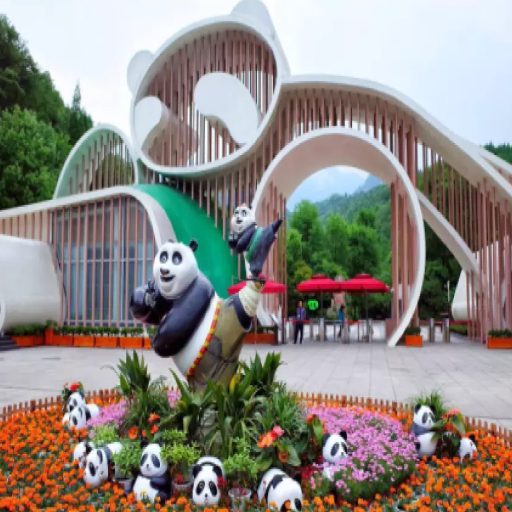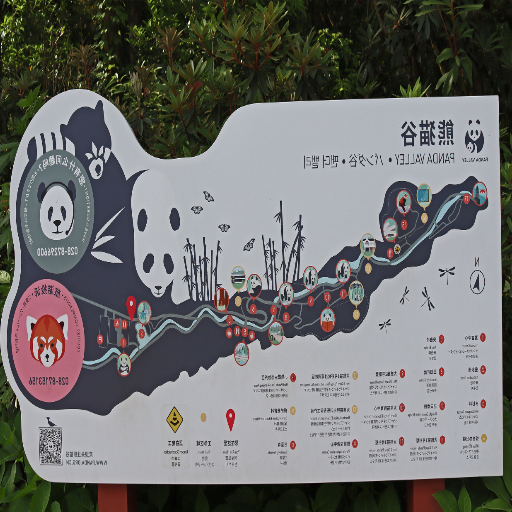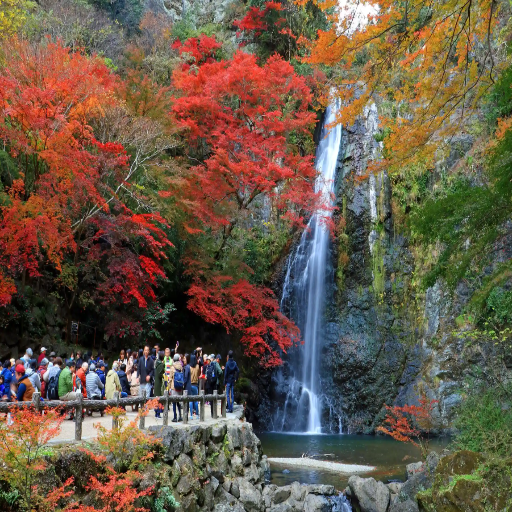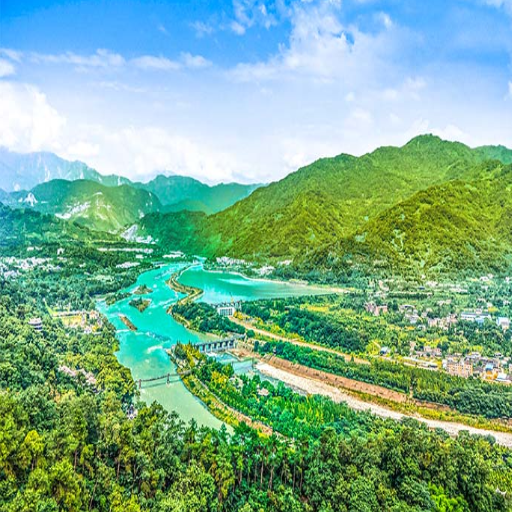Tucked away in the serene mountains of Sichuan, China, Dujiangyan Panda Valley is one of the places dedicated to protecting and conserving giant pandas. This destination allows users to see and learn about these beautiful animals in their natural habitat. From observing panda behavior to participating in volunteer programs, the valley promises to deliver memorable experiences to wildlife enthusiasts and travelers. This article will take you through the attractions and conservation efforts of Dujiangyan Panda Valley, which makes it a magical place to visit.
What is the Dujiangyan Panda Valley?

Understanding the Giant Panda Sanctuary
HOME panda conservation The Dujiangyan Panda Valley is a panda rehabilitation and management center located in the Sichuan Province of China. It covers roughly 51 hectares of sanctuary designed to emulate the pandas’ natural habitat, with dense bamboo forests and varying topography. The valley’s primary objective is to support the adaptation of giant pandas into the wild; hence, the facility aims to foster the proper living conditions.
Site development: The sanctuary features clean water, bamboo shooting areas, and proper shelter sites that mimic wild conditions.
Research and monitoring: The facility is an important conservation site, helping scientists study panda behavior, genetics, and health issues. The facility is equipped with sophisticated systems for continual monitoring and veterinary care.
Conservation efforts: The facility uses a slow interaction approach, reducing human contact over time to permit pandas to learn to function independently.
Dujiangyan Panda Valley is a perfect illustration of integrated conservation, which combines advanced scientific research with the need to save one of the most loved endangered species on Earth: the panda.
The Role of Dujiangyan Panda Base in Conservation
The Dujiangyan Panda Base has made a key contribution towards the conservation of giant pandas through various important initiatives, which include:
Research: The research base masters giant panda’s genetics, physiology, and behavior to help devise ways to conserve the species. Their study adds to the existing global slab of data concerning the health and reproduction of pandas.
Medical Care: The base has modern medicine facilities, and it treats pandas with severe illnesses and injuries and performs other required routine examinations.
Rewilding Programs: The panda’s habitat is humanly simulated. For the pandas to be able to live in the wild, human contact must be less, and the pandas must be monitored. This slow process ensures that the pandas, which are used to living in captivity, are able to adapt to life in the wilderness.
Habitat Preservation Efforts: The base collaborates with local and international organizations to stop habitat destruction and ensure the panda’s long-term survival.
All these efforts ensure the preservation of the existing panda population and sustainable ecosystem management in the long term.
Activities at the Panda Center
To guarantee the safety, protection, and possible biological rehabilitation of pandas, the Panda Center undertakes several actions such as:
Feeding and Nutrition Management: Daily radiation of nutrients is done to each panda, considering their age and sex. Each panda receives a maximized diet based on their age. Expert veterinarians perform quarterly health examinations, with each panda’s blood drawn for nutritional testing. During the hot portions of the day, pandas eat between 20-40 kgs. of bamboo and are fed dietary supplements.
Medical Care and Health Checkups: Proper health maintenance entails regular vet examinations for blood work, weight checks, and dental cleanings. When needed, high-level equipment performs X-rays and ultrasounds.
Behavioral Observation and Studies: Actions are taken to stimulate pandas’ foraging and climbing instincts, and subsequently, professional psychologists and behavioral scientists study them to detect the savants’ behavioral characteristics and the underlying mental concepts behind their motivations.
Rewilding Training Programs: Habituation and exposure to real food sources and pretend enemies are some techniques used in pandas’ semi-wild settings to relearn survival skills together with real food sources and disguised predator activity engagement.
Public Education and Engagement: Tours, detailed reports, and informative lectures are some of the underlying steps that a broader audience can take to observe panda conservation. These initiatives aim to involve panda bear habitats.
These activities are meticulously planned and incorporate research that collaborates with panda conservation goals to be panda-friendly and sustain life in their environment.
How to Get to Dujiangyan Panda Valley?

Traveling from Chengdu
Dujiangyan Panda Valley is roughly 55 kilometers (34 miles) from Chengdu. It is one of the most popular sights in the city, so traveling there is quite easy. Travelers can use any of the following modes of transportation:
By Car: It takes around 1 to 1.5 hours to drive from Chengdu, depending on how congested the roads are. Private transfers and rental cars are readily available in Chengdu, making the trip much easier, as directly driving to the valley is possible.
By Train: A high-speed train takes about 30-40 minutes to get from Chengdu to Dujiangyan. After arriving at Dujiangyan Railway Station, you can either take a taxi or use the local bus service to get to the Panda Valley.
By Bus: Buses can be boarded from Chengdu to Dujiangyan, and the trip usually takes 1.5 to 2 hours. Subsequently, taxi services from the bus station to the valley are available for passengers.
Dujiangyan Panda Valley is one of those attractions that can be visited with literally any form of transport.
Public Transport Options: Railway and Bus
To reach Panda Valley, I have mentioned all the details regarding the transport above so you can plan at your convenience. Let me explain in detail:
By High-Speed Rail:
Travel Time: Around half an hour from Chengdu to Duyingyan.
Frequencies: Several trains are available throughout the day; however, these should be double-checked.
Cost: Usually, the ticket price is between 15-30 CNY based on seating class.
Convenience: Speed and comfort with minimum delays are provided, and taxi or local bus rides (10-20 minutes) are preferred. After reaching Dujiangyan Railway Station, these can be taken to the valley.
By Bus:
Travel Time: 1.5 to 2 hours, which highly depends on how busy the traffic is.
Frequencies: There are several buses available throughout the day. However, there might be some variation based on the operator.
Cost: Bus fares around 20-35 and proved quite handy.
Convenience: This is perfect if you plan on spending very little; however, it does take a lot of time. A taxi is needed for the last portion of the journey towards Panda Valley, but this should not be busier.
Both of these forms of traversing cover a vast option range that individually meets everyone’s expectations. The high-speed rail option is perfect for anyone short on time, while the buses serve everyone else’s budget.
What are the Nearby Attractions?

Exploring Mount Qingcheng
Qin Cheng is a well-known mountain that is beautiful all year round, so if you happen to be in the area, don’t forget to check it out. Besides loving the magnificent greenery and the calm atmosphere, you can enjoy its significance аs based on Taoism, one of the oldest religions in the world. The hike takes around 2 to 3 hours to complete, based on your ability, and there is a moderately steep path leading to the summit. If you want to conserve your energy, there is a cable car for your convenience.
Physical Build: Moderate (hiking) or low (cable car is available).
Effortless time: The 2-3 hour timeframe for hiking is considerably shorter than the period if you opt for the cable car.
Best suited for: Cultural enthusiasts, nature lovers, or people who appreciate calm and tranquil settings.
Besides the wonderful scenery, stems and breathtaking temples offer stunning views of the mountain’s summit. Mount Qing Cheng is not only a joyous, elegant pilgrimage but is quite idealistic when enjoyed with the Panda Valley.
The Historical Dujiangyan Irrigation System
The Dujiangyan Irrigation System, built more than 2000 years ago, showcases ancient engineering marvels. Its ancient functioning system still works today. It was built during the Qin dynasty by a remarkable engineer, Li Bing, and his son, who envisioned ways to control flooding by diverting the water of the Min River while at the same time ensuring there was enough water for agricultural irrigation.
The answer is affirmative if the historical or technical features still impact the scope of its operation or design parameters. The system employs a Fish Mouth Levee, Flying Sand Spillway, and other unique features that do not require dams for water filtration and diversion. The ability to sustain agricultural practices, coupled with ecological conservation, endorses the efficacy of its technical design.
In the case of Dujiangyan, some of the specific parameters that can be highlighted are its ability to irrigate more than 668.7 thousand hectares of land and the use of river hydraulics for regulating water discharge. These characteristics, which emphasize the effectiveness of its construction, also testify to its ancient and modern versatile nature.
Cultural Insights at the World Heritage Site
The cultural importance of this World Heritage Site is connected with its historical and technological advancements. In contemplating the questions, I appreciate that the project’s success stems from and embodies the synthesis of culture and engineering. The site shows primitive sustainable water management by respecting the natural terrain and using indigenous knowledge.
This cultural approach does influence the technical parameters. For example, the precision engineering for irrigation of more than 668,700 hectares of land is complimented by cultural sensitivity to communal agricultural needs. Also, the natural river hydraulics used for water discharge prove environmental respect and minimum ecological destruction. Combining these factors reveals why the site is a World Heritage Site: the blend of cultural and ecological sensitivity with practicality.
When is the Best Time to Visit?

Seasonal Highlights in Sichuan
In my opinion, Sichuan’s ideal visiting times highly relate to personal preferences and needs. If the beautiful scenery of the Dujiangyan irrigation system interests you, spring or the months of March to May will suit your needs the best, as the weather is excellent and flowers bloom, bringing nature’s elegance to the region. If you enjoy hot weather, then Summer (June to August), while also warm, does bring its share of rainfall, which might lead to excessive water surplus in the irrigation channels. Autumn (September to November) is known for cooler temperatures and blue skies, along with cultural appreciation, making it comfortable for visitors and tourists. While excessive rain might cause dramatic water levels at the site, there is a silver lining, as the increased flow during the rainy seasons ensures proper irrigation. Even though winter (December to February) brings harsher climates, the lack of tourists provides an excellent opportunity for quiet exploration.
From a more analytical perspective, summer does lead to an increased rainfall deficit, which would require greater management of water discharge to balance flood control and water irrigation. The Dujiangyan irrigation system is not only efficient but also quite effective even with continuous change through seasons, with these adjustments being much more calculated and executed.
Weather Considerations for Panda Watching
Panda-watching is an entertaining activity requiring accurate weather forecasts for a successful outcome. I prefer spring (March to May) and autumn (September to November) as the best seasons. This is because both pandas and visitors are comfortable due to milder temperatures and lower humidity. Pandas tend to be more active during these seasons, frequently observed eating and climbing ropes and trees within their pens or in the wild.
From a more technical angle, the parameters of temperature and humidity tend to be spring and autumn, which are likely to provide the best, balanced panda ecosystem for the pandas without extensive artificial climate control. However, it would be too hot during the summer months (June to August), and cooling systems may need to be used in the panda’s pens. This added energy expense would ensure the welfare of the pandas but at the cost of increased energy consumption. Winter time (December to February) also freezes, meaning heating needs to be adjusted to ensure the comfort of younger/sicker pandas. These weather factors highlight the relevance of monitoring animal comfort alongside technical environment systems to control the balance effectively.
Why is Chengdu Known as the “Land of Abundance”?

The Rich History of Sichuan Province
Aside from being known as the “Land of Abundance” region for its Chengdu city, Sichuan Province has abundant natural resources and a favorable climate. The above traits have turned Chengdu into an economically competent city with a rich culture. There are agriculture-based practices from the Dujiangyan Irrigation System built in the Qin Dynasty. The system provided water to farmland while ensuring that floods were minimal. With many available resources, cultural and trade stability flourished over the centuries.
Managing an environment such as this requires quite an intricate system across agriculture, water management, and balancing ecology. To keep the advantages historically enjoyed, rainfall patterns, soil, and irrigation efficiency of the region would need constant monitoring. Supporting the longevity of the Land of Abundance can be achieved through modernized agriculture, and the same can be said for advanced hydrological modeling, thus making the prediction measures justifiable. Overall, these technical aspects ground the claim and helped Pakistani maintain their reputation in environmental management around Sichuan.
Influences of Taoism in the Region
Sichuan’s core philosophical and cultural structures are blended with Taoist thoughts, and I consider that this focus on balance is in perfect harmony with the principles of modern-day environmental management. In my experience, addressing the harsh parameters of conservation and soil fertility management requires a Taoist approach to sustainable practices, where the environment is protected with the help of water resources.
For instance, Taoist simplicity and adaptive features can significantly transform irrigation practices. Such patterns would contribute to achieving an adequate water balance with the regional ecosystems. Moreover, the reverence towards natural cycles demonstrated by Taoism also favors assistance in soil improvement through certain agricultural practices. Applying these Taoist-influenced methods would achieve these limiting contrasts and, in turn, defend the regions from the uncontrolled use of natural resources, which could promote agricultural development while also sustaining environmental health and declaring the need for more protection in accommodating Sichuan’s agrarian resilience.
Agricultural Significance and the Dujiangyan Irrigation System
In my opinion, the Dujiangyan Irrigation System is a vital component for sustaining agriculture in Sichuan. It not only meets the irrigation needs of farmers but also allows them to work more diligently. This system, which dates back over 2000 years, allows water scaling for farmland without building dams, which promotes river destruction. This dramatically improves agricultural productivity.
Considering the technical aspects, balance can be identified through the following attributes:
Design of the Weir: The fish mouth levee has a water break that separates excess water into external rivers for flood control and internal rivers for irrigation purposes, resulting in optimal water usage.
Diversity Structure: A slope where sediment can freely flow downstream while clear water is automatically supplied to irrigation flows prevents blockage, ensuring long-term effectiveness.
Flow Control: The system’s framework adapts to changes in water levels during different seasons, self-stabilizing throughout the year without external interruption.
Centuries of effective operation corroborate all parameters, illustrating how the Dujiangyan system meets agricultural needs within the region and how it exists within nature’s cycles.
Frequently Asked Questions (FAQs)
1. What does the Dujiangyan Panda Valley aim to achieve?
The purpose of the Dujiangyan Panda Valley is to conserve and conduct research on giant pandas, aiding in their natural behaviors, and eventually helping them return to their natural habitats. It gives them a secure place that guarantees their survival.
2. In what ways does the Dujiangyan Irrigation System aid in maintaining the pandas’ habitat?
It helps regulate the water supply while averting flooding and controlling the water level, which helps sustain the lush bamboo forests vital for the pandas’ diet and habitat. The automated system ensures that the ecosystem’s water supply is met throughout the entire year.
3. What enables the irrigation system to function successfully?
Flow Division: Utilizing the Fish Mouth structure to separate river water. Sediment Management: Built with the capability to remove debris buildups to keep flow unobstructed. Automated Flow Regulation: Modifying the seasonal water level fluctuations to balance ecosystems without interference. These external parameters preserve the soft limits between agriculture, ecosystem conservation, and hydrology.
4. Are guests able to interact with the pandas in the valley?
Visitors can view the pandas in semi-natural habitats at the valley’s controlled locations. Nonetheless, there are clear rules to reduce anthropogenic contact and stress-related responses from animals.
5. What actions does the facility take to aid in reintroduction efforts?
The valley is a great training place for pandas to learn how to survive by foraging and recognizing predators with the least human contact. This guarantees that the animals will be ready for life in the natural environment.